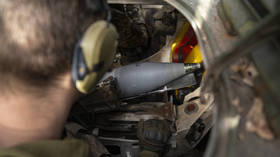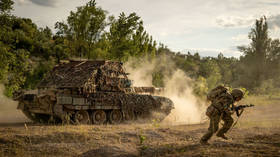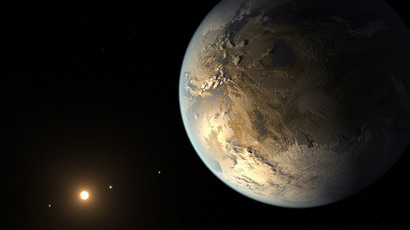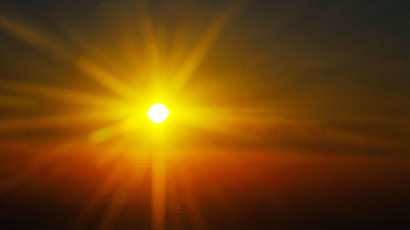Stunning Hubble time-lapse of stellar explosion (VIDEO)
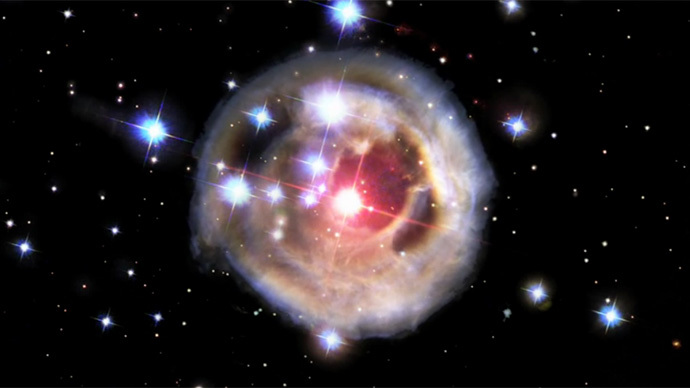
For the third time this month, the team operating the Hubble Space Telescope is dropping jaws across the world, this time with a time-lapse video of an exploding star that spans four years.
The event actually took place back in 2002, when astronomers witnessed an enormous explosion emanating from V838 Monocerotis – a red star located in the constellation Monoceros, which itself is roughly 20,000 light years away from the Earth.
As noted by Gizmodo, prior to exploding V838 had grown to become one of the largest stars ever observed by humans, creating 600,000 times more light than our own sun. When it burst, V838 created an expanding light echo that illuminated the interstellar dust surrounding it and generated one of the most amazing scenes captured by Hubble.
According to NASA and the European Space Agency, the time-lapse video was created using Hubble images captured between 2002 and 2006, and viewers can clearly see the patterns of the universe as the light from the star bathes the area around it.
One of the most interesting things about the V838 explosion is that scientists still don’t know what caused it. Although it was first believed that that astronomers were watching a supernova or the thermal pulse of a dying star, these ideas have generally been ruled out due to the fact that V838 was likely a young star.
“A typical nova is a normal star that dumps hydrogen onto a compact white-dwarf companion star,” the Hubble website reads. “The hydrogen piles up until it spontaneously explodes by nuclear fusion -- like a titanic hydrogen bomb. This exposes a searing stellar core, which has a temperature of hundreds of thousands of degrees Fahrenheit.
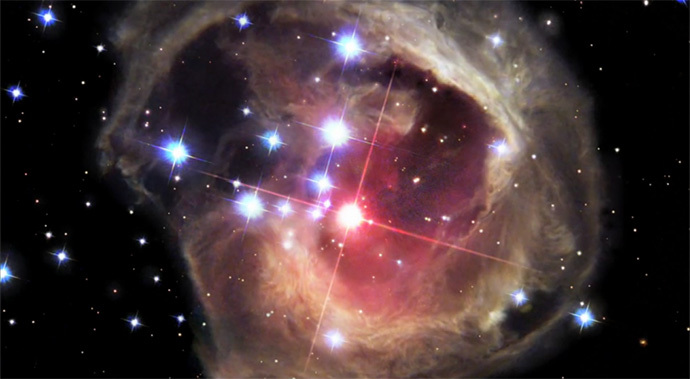
“By contrast, V838 Monocerotis did not expel its outer layers. Instead, it grew enormously in size. Its surface temperature dropped to temperatures that were not much hotter than a light bulb. This behavior of ballooning to an immense size, but not losing its outer layers, is very unusual and completely unlike an ordinary nova explosion.”
Other theories propose the explosion could be the result of the star actually swallowing up a nearby planet, an event noted to be more likely for stars like V838.
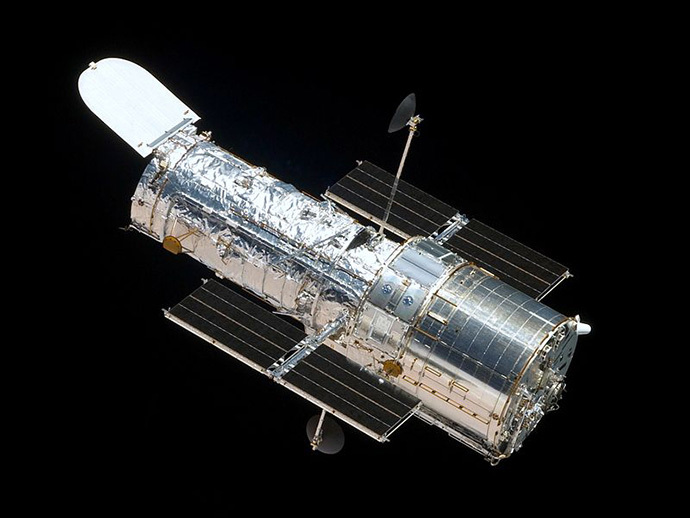
A little more than a week ago, Hubble wowed people with what was dubbed “the most comprehensive picture ever assembled of the evolving universe.” The image was a mosaic of colors and reportedly depicted 10,000 galaxies located in the constellation Fornax.
Just before that, Hubble managed to capture another image depicting the birth of an infant star more than 2,200 light years away, and large enough to stretch across 180 light years.






